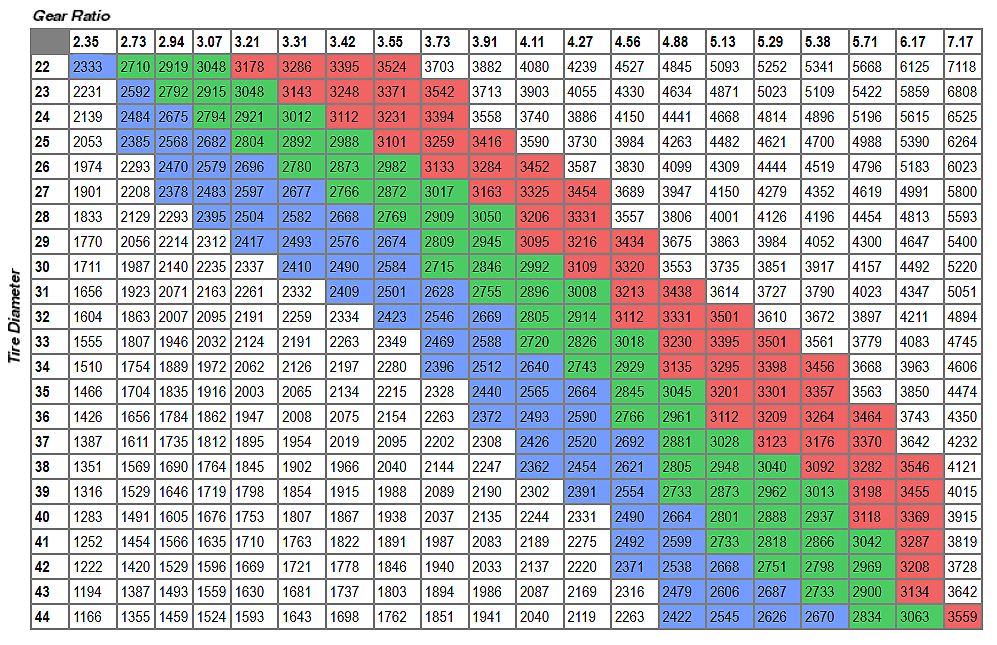Introduction
Whenever you change tire size from the original size to another there will be a direct effect on power and drivability. Before online calculators became available people used to rely on charts to give them an idea of what gear ratio they should using based on tire size. This involved looking at a chart, selecting your tire size, and then following the RPMs across the chart until you came to the recommended RPM and gear ratio combination.
Today there’s a better way of doing it. By using our Gear Ratio Calculators, you can enter your current gear ratio factory tire size and the size of the tire that you’re moving up to, and the calculator will tell you what gear ratio you should use to maintain the vehicles original performance.
For those that still want to compare how tire size effects engine RPM and performance, you can use the chart below.
Tire Diameter / Gear Ratio / RPM Chart
We have developed this chart to help you select the optimum gear ratio to put your performance back where you want it.
Using the chart below, first determine your original gear ratio and tire size and follow to the intersection that should be your approximate RPM at 65 MPH. Next find your new tire size and follow that across to the closest RPM to your original and that will be first choice.
If you are interested in a change that will give more power or better fuel mileage, use the color coding as a guide.
| Highway Driving, Good Fuel Economy | |
| Daily Driver, Best Overall Performance | |
| Most Power and Towing, Reduced Fuel Economy |
This chart is based on 65 MPH and a gear ratio of 1:1, on a manual transmission in 4th gear.
Please NOTE: If you have an automatic transmission your RPM will be higher due to slippage in the transmission and the torque converter. With an overdrive transmission your RPM in overdrive will be 15% to 30% less than indicated.
Calculator: Check out our calculator to automatically calculate the gears you’ll need after a tire change HERE.

